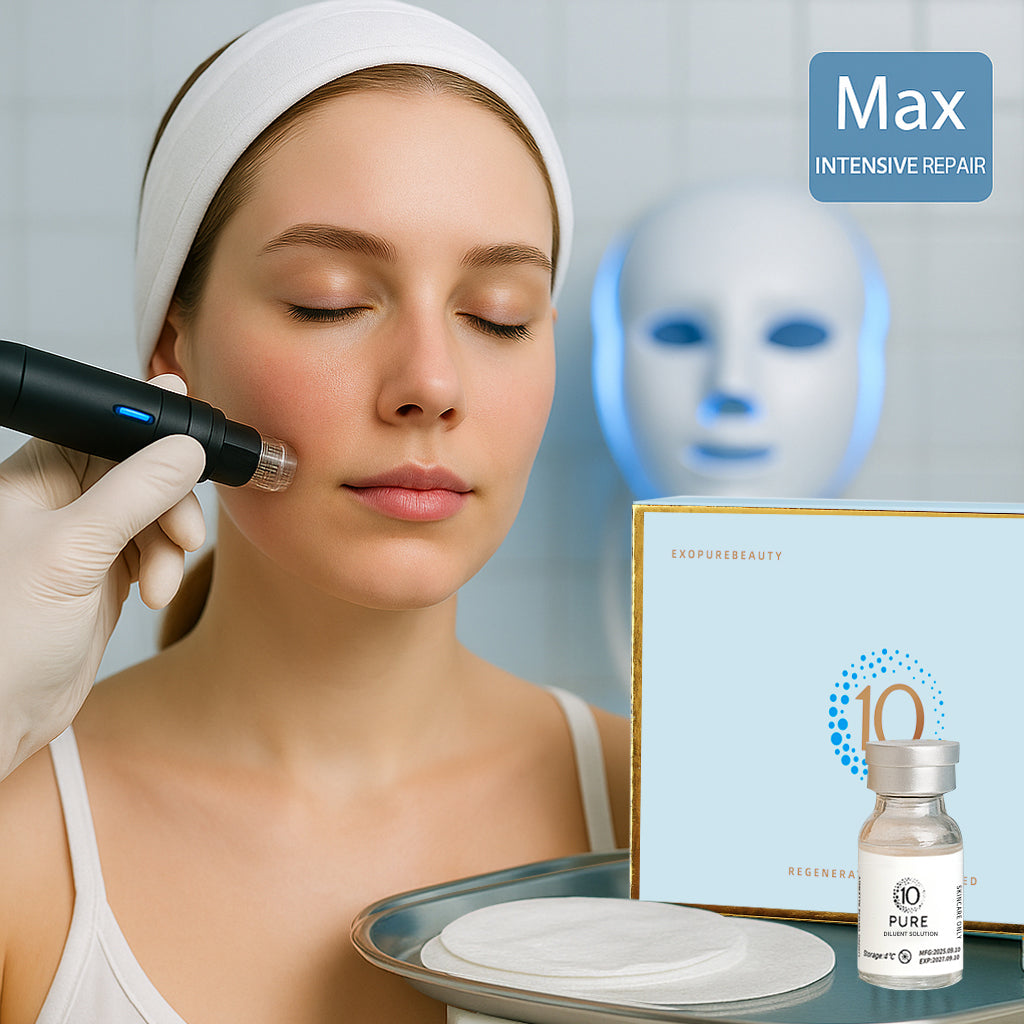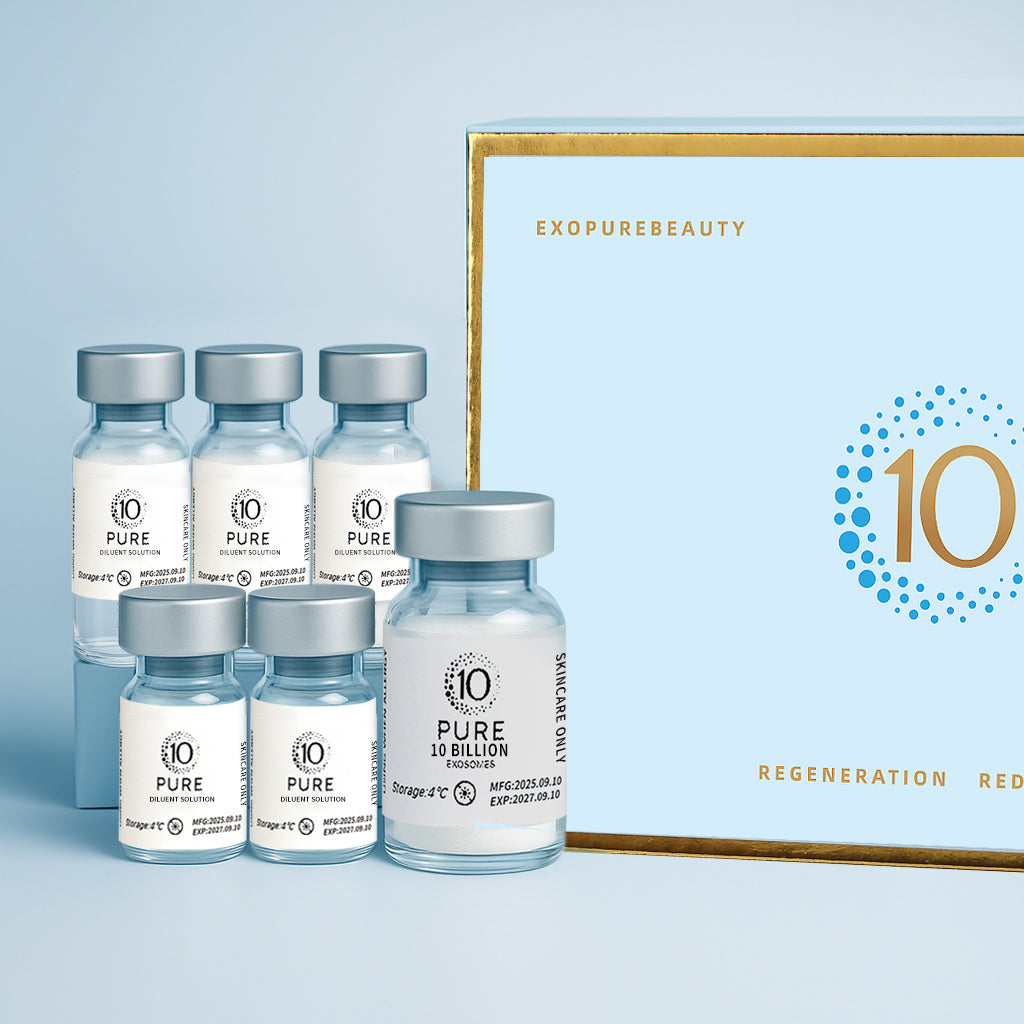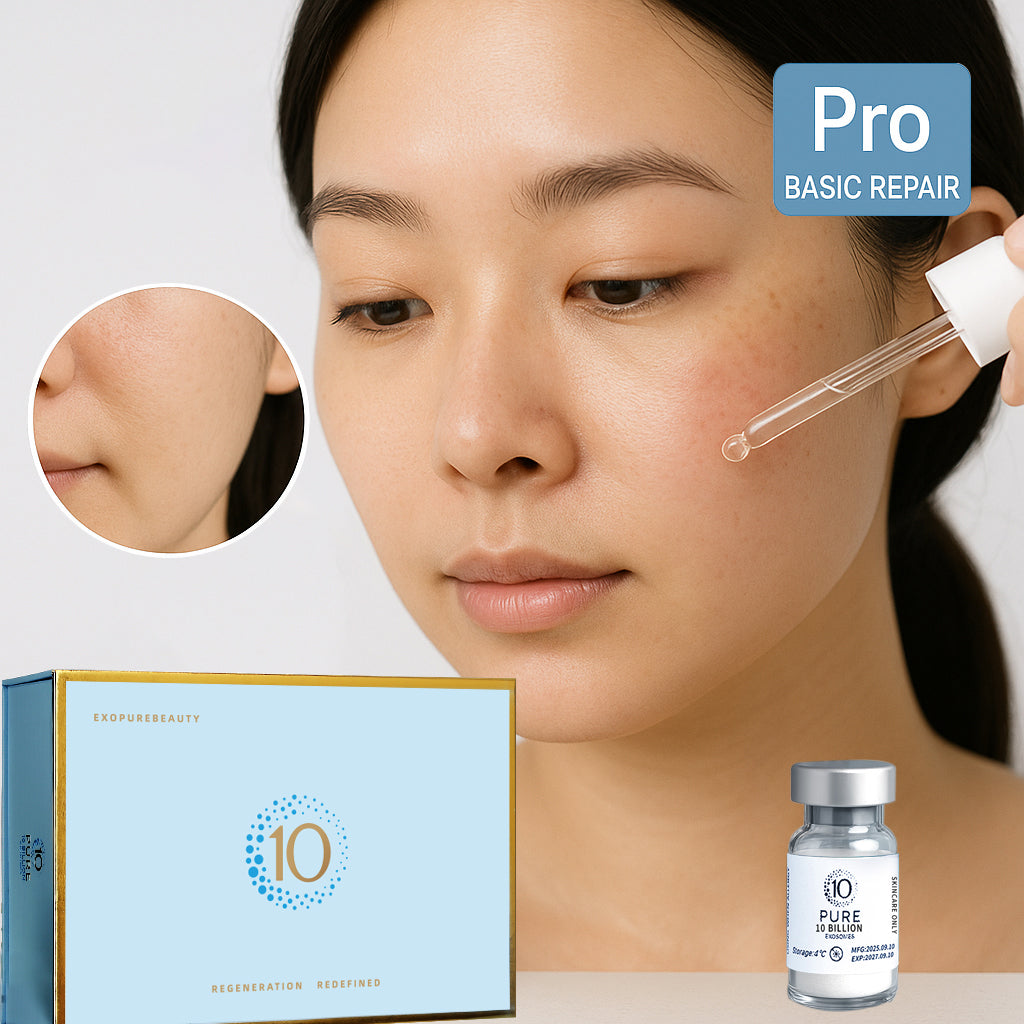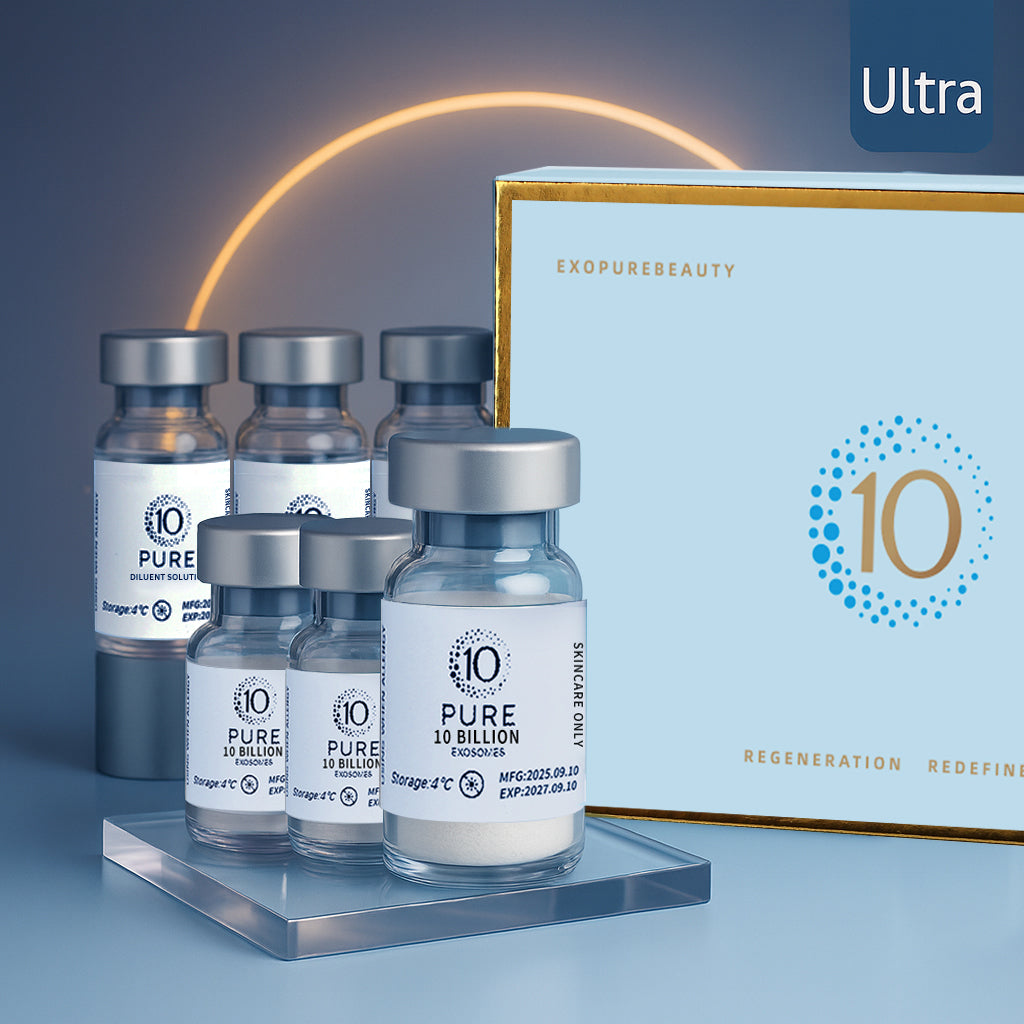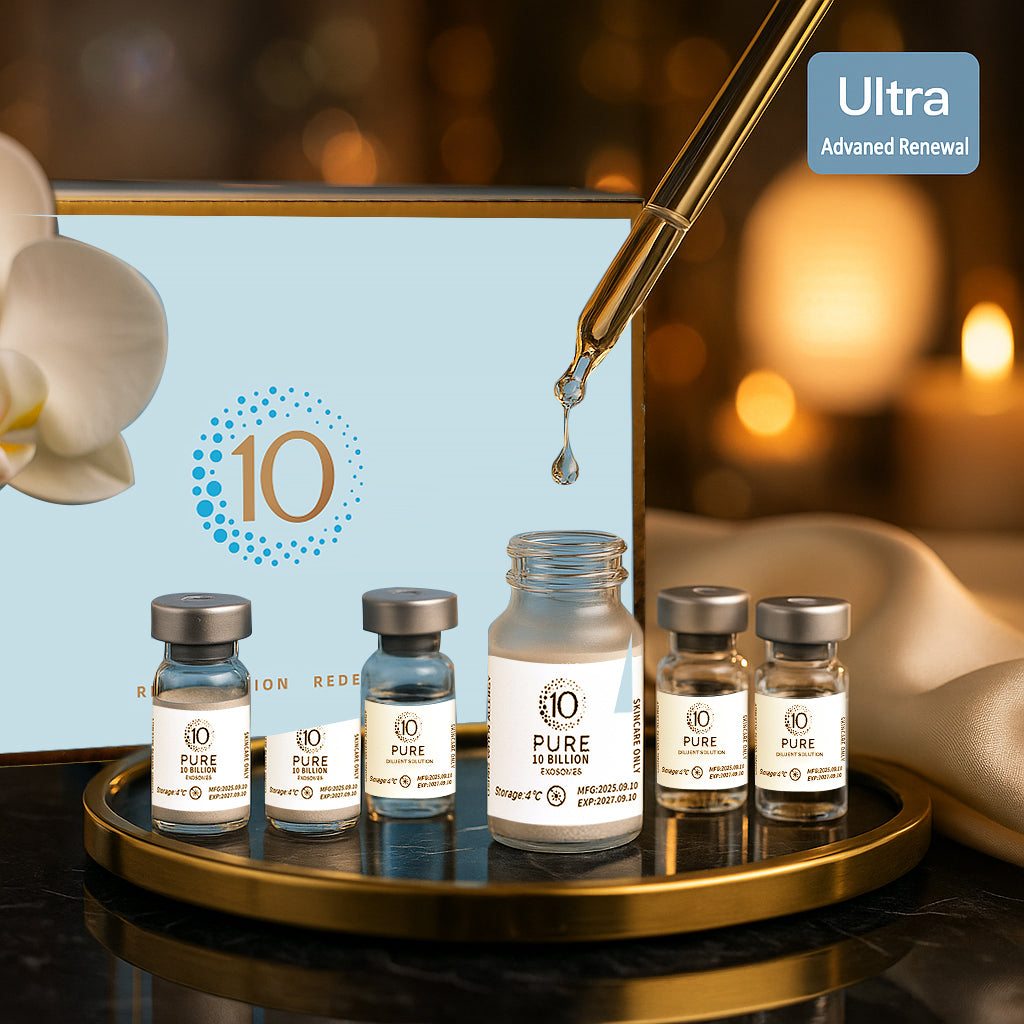Reduce variables, get steadier, more precise outcomes
In 2013, the Nobel Prize in Physiology or Medicine decoded the cell’s “vesicle trafficking” playbook—how signals are packaged and delivered. That blueprint helps us understand and modulate exosome formation and release, opening new possibilities for skin and aesthetic care. Exosomes are widely explored as one of this century’s most promising ways to overcome long-standing bottlenecks in regeneration and repair.
TL;DR
Perceived speed is multifactorial: baseline barrier, whether you hit the 0–60 min post-procedure window, sticking to a 7–10-day cadence for 2–3 sessions, how clean your first 72 h are (repair + SPF only), external exposure, and sleep/stress patterns. Tighten those variables and pair them with our one-vial/one-session and traceable freshness workflow to turn “same-day comfort” into 2–4 weeks of smoother, more even-looking skin. Individual responses vary; no outcomes are guaranteed.
8 drivers that change the pace
-
Time window discipline: Within 0–60 min post-roll/procedure, fresh-mix EXO-Lyospheres™ → full single-vial application → 10–15 min calming occlusion.
-
Cadence continuity: Complete 2–3 sessions at 7–10-day intervals (Max/Ultra). A single session is more prone to “rebound.”
-
72-hour management: Repair + broad-spectrum/physical SPF only; no strong acids/retinoids/high-% L-AA vitamin C or heat devices.
-
How you stack actives: Phase by time and zones; “all the strong stuff in one week” = slower, less stable.
-
Baseline barrier: If dry/reactive, do 1–2 weeks of non-invasive maintenance first (see Q16).
-
Sun & environment: UV, steam/sauna, heavy workouts, AC/dry cold slow things down.
-
Sleep & stress: Irregular sleep, alcohol, and stress widen day-to-day swings.
-
Biology: Age and lipid/keratin rhythm differ between individuals.
“Fast vs. slow” cheat sheet — find your bottleneck and fix it
|
What you’re seeing |
Likely reason |
Immediate fix |
|---|---|---|
|
D0 didn’t feel much calmer |
Missed the 0–60 min window; makeup/heavy SPF the same day |
Next time: hit the window. D0 = fresh-mix → occlude 10–15 min → light barrier care → physical/broad-spectrum SPF only |
|
D3 still red/tight |
Used acids/retinoids/high-% L-AA or heat/steam in 72 h |
Stop all strong actives & heat; do repair + shade; extend next interval to 10 days |
|
Week 1 feels “meh” |
Only 1 session; poor sleep/extra sun |
Do D0 → D7–10 (Max) to complete session #2; commit to shade/sleep |
|
Week 2 still unstable |
Same-week piling of peels/devices |
De-conflict weeks; for devices follow device → cool/epidermis closed → exosome (see Q13) |
|
Dry/sensitive feels tighter |
Barrier weak; parameters/frequency too aggressive |
Switch to non-invasive thin layer/soak 1–2×/week; downgrade or pause needling |
|
Itchy or reactive after use |
Tolerance issue or contamination |
Stop functionals; saline mist + repair cream; keep LOT/Vial-ID and seek help/medical care if needed |
Execution checklist that locks variables
-
One vial = one session. Freeze-dried vial + dedicated diluent, fresh-mixed; if you must split, 2–8 °C and finish within 48 h.
-
D0 SOP: 0–60 min delivery → 10–15 min calming occlusion → light barrier care → physical/broad-spectrum SPF; no makeup (see Q14).
-
72-hour rule: Repair + SPF only; no strong acids/retinoids/high-% L-AA; no sauna/steam/heavy workouts.
-
Cadence: 7–10 days per session. Pro = single try, Max = two-week “leveling”, Ultra = 3–4-week micro-cycle.
-
Freshness & traceability: Fresh-Batch 48h (latest released batch assigned within 48 h, per-vial label, temp-aware shipping). Scan LOT/Vial-ID for Trace Page.
Troubleshooting timeline — when to adjust
-
After session #1: If D3 still clearly uncomfortable → extend interval to 10 days and enforce 72-hour rule.
-
After session #2: If still “no trend” → audit time-window adherence, sun exposure, and active stacking; consider upgrading to Ultra (3+3).
-
After session #3: If still flat → pause functionals, run barrier-repair only, and review baseline skin, exposure, and sleep with a professional. Seek care for persistent adverse reactions.
What you can control vs. what you can’t
-
You control: the 0–60 min window, cadence, 72-hour hygiene, shade/sleep, phasing of actives, clean handling at opening.
-
You can’t fully control: climate, innate lipid/keratin rhythms, age-related turnover, travel stress.
Turn “feelings” into evidence (simple tracking)
At D0 / D3 / D7 / D14 / D28, shoot the same angle/lighting and jot down: Hydration ↑, TEWL ↓, Erythema ↓, Elasticity (R2/R7) ↑, plus tightness & makeup adhesion (0–10). You’ll see “steadier & smoother” trends more clearly than by memory.
Compliance note (site-ready)
This product is a cosmetic for surface-level soothing, hydration, and barrier support. It does not diagnose, treat, cure, or prevent disease. Individual experiences vary with skin condition and adherence.
One-line wrap
Nail the window, finish the cadence, keep the first 72 h clean, and phase your actives—those controllables narrow the speed gap dramatically. The rest, Fresh-Batch 48h and your camera roll will help you verify—steady is faster.
Read more
From same-day comfort to 2–4 weeks of steadier refinement In 2013, the Nobel Prize in Physiology or Medicine decoded the cell’s “vesicle trafficking” playbook—how signals are packaged and delive...
PURE in five rules, made verifiable In 2013, the Nobel Prize in Physiology or Medicine decoded the cell’s “vesicle trafficking” playbook—how signals are packaged and delivered. That blueprint he...


